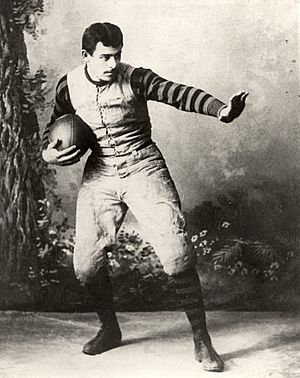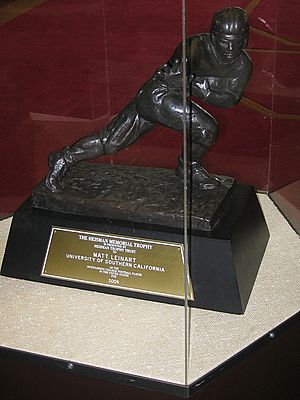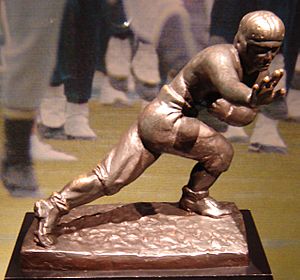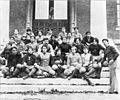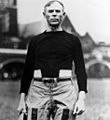John Heisman facts for kids
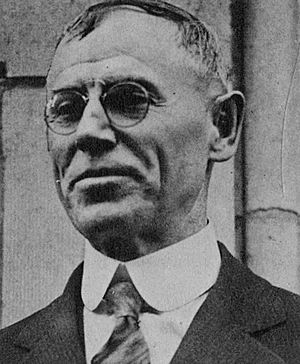
Heisman at Georgia Tech c. 1918
|
|
| Biographical details | |
|---|---|
| Born | October 23, 1869 Cleveland, Ohio |
| Died | October 3, 1936 (aged 66) New York, New York |
| Alma mater | |
| Playing career | |
| Football | |
| 1887–1888 | Brown |
| 1889–1891 | Penn |
| Position(s) | Center, tackle, end |
John William Heisman (October 23, 1869 – October 3, 1936) was an important person in American football. He was a player, coach, and even a sportswriter and actor. He coached football at many colleges, including Auburn University, Clemson University, and Georgia Tech. His teams won 186 games, lost 70, and tied 18. In 1917, his Georgia Tech team was named the best in the country!
Heisman also coached basketball and baseball at different colleges. He was even the athletic director at Georgia Tech and Rice University. He was called the "pioneer of Southern football" because he helped grow the sport in the South. In 1954, he was added to the College Football Hall of Fame. He is known for making many big changes to football, like making the forward pass legal. The famous Heisman Trophy, given every year to the best college football player, is named after him.
Early Life and Playing Football
John Heisman was born in Cleveland, Ohio. His parents were German immigrants. He grew up in Pennsylvania and was a very good student in high school.
Even though he studied drama, he loved football. He played varsity football for his high school team from 1884 to 1886. Later, he played as a lineman for Brown University and the University of Pennsylvania. He also played baseball at Penn.
At Brown, he played as a substitute guard in 1887. The next year, he became a starting tackle.
At Penn, he was a substitute center in 1889 and 1890. In 1891, he became a starting end. A sportswriter once said Heisman was a small center who worried about bigger players falling on him! Heisman even got a flat nose from a football hitting him during a game.
Heisman finished law school at the University of Pennsylvania Law School in 1892. He had poor eyesight, so he took his final exams by speaking them instead of writing.
Innovations and Legacy
John Heisman died on October 3, 1936, from pneumonia. He was buried in Wisconsin. When he passed away, he was planning to write a book about the history of football.
Heisman was a very smart coach and a "master strategist." He was added to the College Football Hall of Fame in 1954. He came up with many new ideas for the game. For example, he created one of the first "shifts," where players move before the ball is snapped. He also strongly supported making the forward pass legal, which changed football forever.
Heisman also invented the "hidden ball play." He started the tradition of the quarterback shouting "hike" or "hep" to begin each play. He helped change the game from two halves to four quarters. He is also given credit for the idea of showing downs and yardage on the scoreboard. He even thought of putting his quarterback at the safety position on defense.
Just two months after Heisman's death, a special award was renamed the Heisman Memorial Trophy. This award is given every year to the best college football player in the country. Sports reporters and past winners vote for who gets the award.
Many places honor John Heisman. There is a Heisman Street at Clemson University. Heisman Drive is at Auburn University, and there is a statue of him there too. A wooden statue of Heisman is at the Rhinelander–Oneida County Airport. There is also a bronze statue of him at the University of Akron. Heisman has even been the subject of a musical!
Images for kids
-
Pitt's Tom Davies ran against Georgia Tech in 1918.


